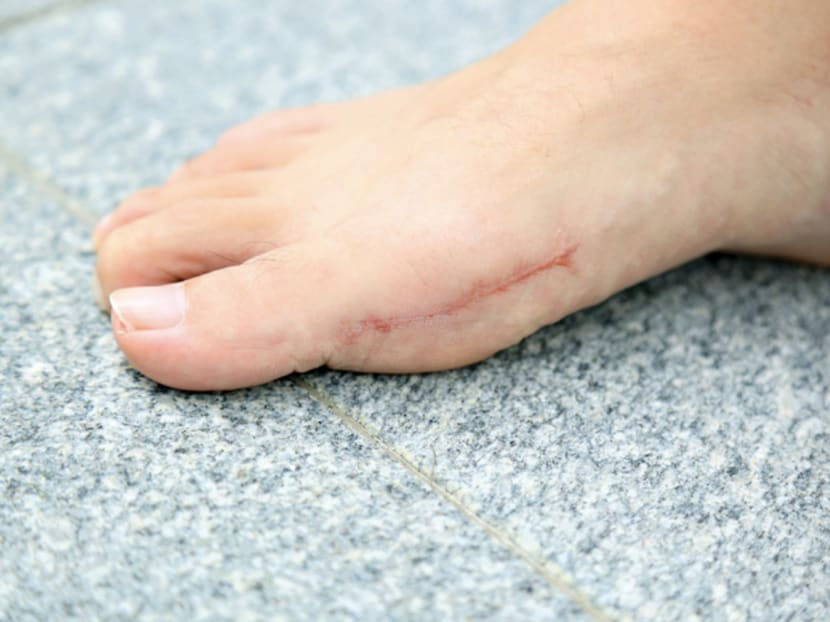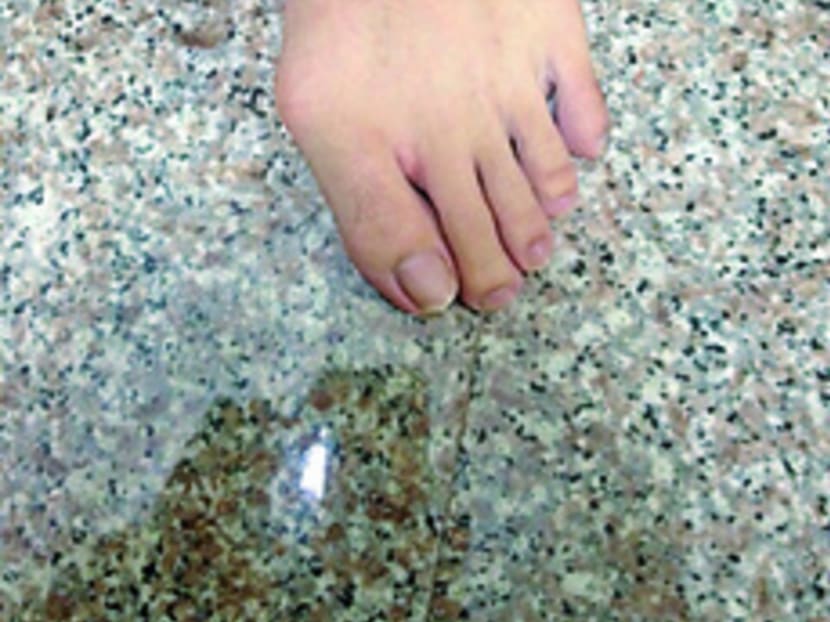Bunion surgery now offers more pros than cons
SINGAPORE — For years, Mr Tan Wen Jie, 21, was told that nothing could be done about his painful bunions.



SINGAPORE — For years, Mr Tan Wen Jie, 21, was told that nothing could be done about his painful bunions.
The undergraduate started experiencing discomfort in both feet when he was about 10 years old. Over the years, this escalated to sudden bouts of intense pain even when he was not doing any activity.
Things took a turn for the worse when he started National Service two years ago. During a route march, Mr Tan shifted his gait to take the load off his bunions. As a result of placing more stress on his other toes, he suffered a stress fracture in his right foot.
That was when Mr Tan decided to opt for surgery to remove his bunions.
WHAT IS A BUNION?
A bunion is a bony bump on the side of the big toe that occurs when the joint at the base of the big toe is out of alignment. It is considered a deformity of the foot, said Ms Dorcas Sholanke, head of Podiatry Department at Tan Tock Seng Hospital (TTSH).
A bunion can cause discomfort and pain in the joint area as well as under the ball of the foot, said Ms Sholanke.
Dr David Su, medical director of The Orthopaedic Centre at Mount Elizabeth Novena Specialist Centre, estimated that up to 30 per cent of patients like Mr Tan grapple with bunions severe enough to impair their quality of life. This figure is just the tip of the iceberg, as many people don’t seek medical help, said Dr Su, who is also a foot and ankle specialist.
The condition usually runs in the family, Dr Su said. Both Mr Tan’s mother and twin sister also have the same foot woes.
Ms Sholanke said that certain medical conditions such as arthritis as well as ill-fitting footwear that distorts the shape and bones of the foot may also put one at a higher risk of developing bunions.
To reduce bunion discomfort and pain, Ms Sholanke said, the first line of treatment usually involves non-surgical methods. For instance, wearing suitable footwear with orthotics and insoles can help relieve the pressure on the bunions.
Night splints may also help reduce pain while the patient sleeps, by realigning the foot’s tendons and muscles, said Ms Sholanke.
“However, these treatments cannot change the shape of the foot, and they will not prevent a bunion from getting worse over time,” she said.
WHEN TO CONSIDER SURGERY
Surgery is usually recommended when high levels of pain are experienced over a prolonged period of time and/or when the symptoms start to limit the patient’s daily activities, said Ms Sholanke.
Unfortunately, many people consider surgery too late because of the fear of pain and misconceptions about the procedure, said Dr Su.
Left untreated, bunions may sometimes lead to further problems, including arthritis in the joint of the big toe, said Ms Sholanke.
In Mr Tan’s case, his bunions could lead to arthritis in his forefoot and mid-foot in the future, said Dr Su.
“By the time the patient seeks treatment, his overall health may also be affected as he might not be doing regular exercise because of the pain,” said Dr Su.
Generally, the more symptoms the patient has, the more willing he is to consider surgery, said Dr Mohd Fadil Muhd Farhan, associate consultant at Orthopaedic Surgery Clinic at TTSH.
About 15 years ago, bunion surgery had a “terrible” reputation for being extremely painful, with a long recovery time, said Dr Su.
“Back then, the patient would be in a cast post-surgery and might take 10 weeks to three months before he could walk properly. He would have to be in a wheelchair if he had surgery done on both feet at one go.”
With the current surgical techniques, post-surgery pain and recovery time are drastically reduced. Dr Su said 90 to 95 per cent of his patients are able to do some light sports six weeks after the surgery.
With the help of a walking frame and special protective footwear, Mr Tan said he was “up and about” on the second day of his surgery. By the third month, he was well enough to jog.
TAILORED SURGERY
The main goal of any bunion surgery is to correct the bony alignment of the foot and rebalance the muscle forces around the big toe, said Dr Farhan. This involves creating cuts in the bone to reshape it, as well as soft tissue procedures. About 70 of such surgeries are done every year at TTSH.
As there is varying severity of bunions, the surgery is specifically tailored to the patient, said Dr Farhan. Bunions may also adversely affect the other toes and if so, corrective surgery may be required for them as well.
“Most patients usually have good outcomes and are able to regain the function of their feet,” said Dr Su.
As with all surgeries, there may be risks involved. Dr Farhan said studies show that bunions can recur in 2.7 to 16 per cent of cases after surgery. Depending on the type of surgery, the patient might also require up to two to three months of medical leave.
Other post-surgery complications include scar pain, and numbness or stiffness in the big toe joint, said Ms Sholanke.
A year and a half after the surgery, Mr Tan is back to his regular daily activities. He feels the surgery was the best decision he has made as he is no longer at the mercy of pain.





